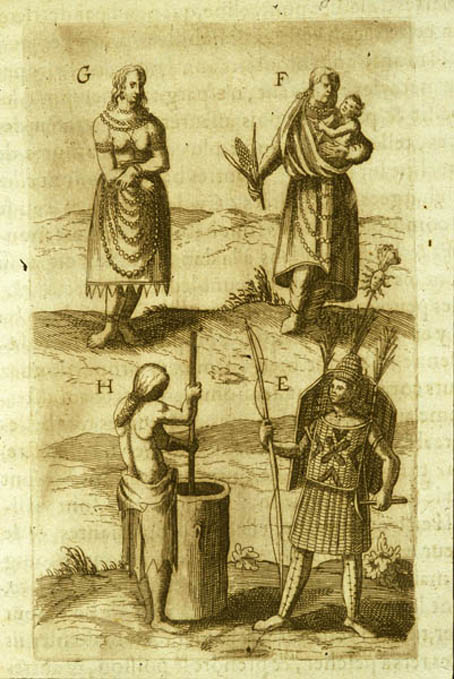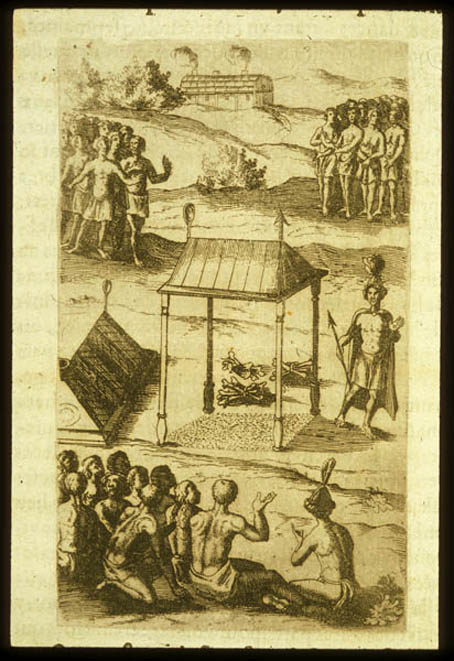Menu
North America through the eyes of Champlain
During his many years spent exploring what is now North America, Champlain carefully recorded his observations of the landscapes and people he encountered. These observations were shaped not only by what he saw, but also by his own world view and his earlier experiences living in France and travelling in the West Indies. His published works provide a valuable record of a European’s impressions of North America in the early 17th century.
All quotations below were taken from The Publications of the Champlain Society: The Works of Samuel de Champlain, Volumes I to III (edited by H.P. Biggar, Toronto: The Champlain Society, 1922-36).
Tadoussac, 1603
“The said harbour of Tadoussac is small; and could not hold above ten or twelve ships: but there is water enough towards the east, with shelter from the river Sauguenay along a little hill, which is almost cut off by the sea.” (Volume I, p. 96)
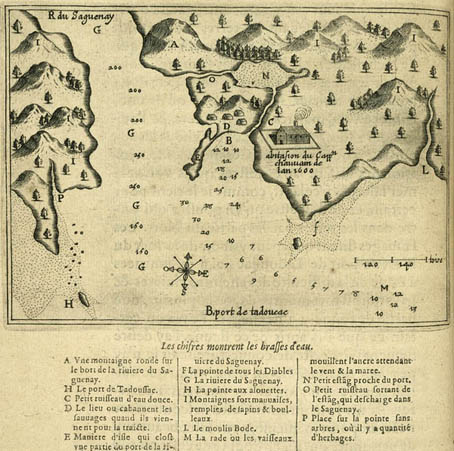
Acadia, 1604-07
Sainte-Croix Island
“ … then, without loss of time, the Sieur de Monts proceeded to set the workmen to build houses for our residence, and allowed me to draw up the plan of our settlement.” (Volume I, p. 275)
“During this winter our beverages all froze except the Spanish wine … We were obliged to make use of very bad water and to drink melted snow, since we had neither springs nor brooks; for it was not possible to go to the mainland on account of the great cakes of ice carried by the ebb and flow of the tide, which rises three fathoms between low and high water.” (Volume I, p. 306)
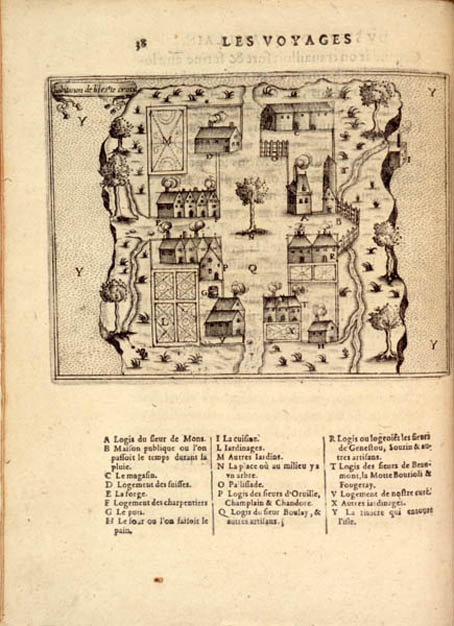
Port Royal
“The plan of the settlement was ten fathoms in length and eight in breadth … On the eastern side is a storehouse of the full width, with a very fine cellar some five to six feet high … Around the courtyard are the quarters of the workmen.” (Volume I, p. 373)
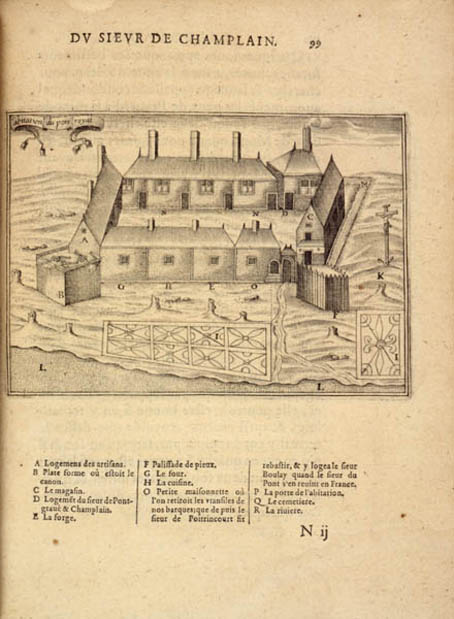
New England, 1604-06
“The coast here though low is fine and good, yet difficult of access, there being no shelters, with reefs everywhere, and little water at a distance of two leagues from land.” (Volume I, p. 426)
“Now as the wind was constantly against us, and we were unable to put to sea, we determined in the meantime, to seize a few Indians of this place, in order to take them to our settlement and make them grind corn at a hand-mill as a punishment for the murderous assault committed upon five or six of our men. But to do this when we were armed was very difficult, since whenever we went to them prepared to fight, they ran away, and betook themselves to the woods where we could not catch them. It was necessary, therefore, to resort to stratagem …” (Volume I, p. 427)
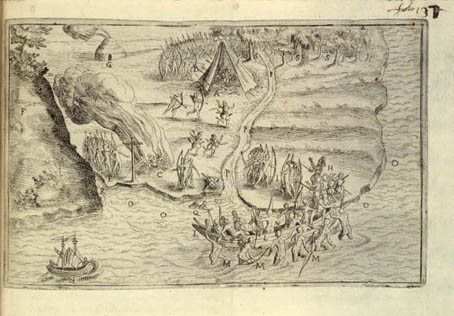
Quebec, 1608-09
“I continued construction of our quarters, which contained three main buildings of two stories … All the way round our buildings I had a gallery made, outside the second story, which was a very convenient thing … ” (Volume II, p. 35)
“Round about the buildings are very good gardens, and an open place on the north side of a hundred, or a hundred and twenty, yards long and fifty or sixty wide.” (Volume II, p. 36)
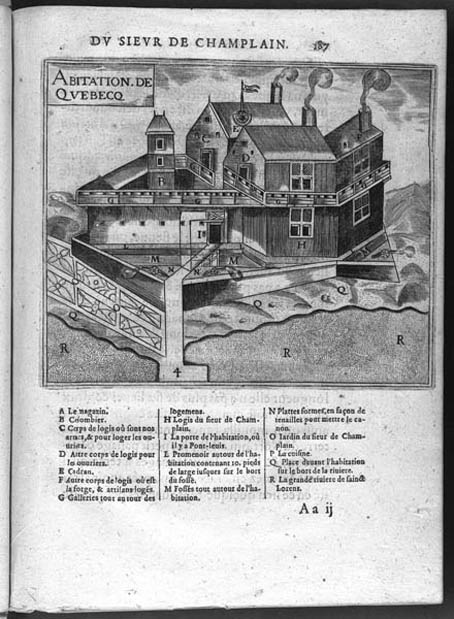
Building Aboriginal alliances, 1609-10
“Our Indians began to call to me with loud cries; and to make way for me they divided into two groups, and put me ahead some twenty yards, and I marched on until I was within some thirty yards of the enemy, who as soon as they caught sight of me halted and gazed at me and I at them. When I saw them make a move to draw their bows upon us, I took aim with my arquebus and shot straight at one of the three chiefs … ” (Volume II, p. 99)
“I directed my companions to keep behind me and not to leave me. I approached the enemy’s barricade to reconnoitre it. It was made of strong trees, placed one upon the other, in a circle, which is the ordinary form of their forts. All the Montagnais and Algonquins also approached the barricade. Then we began firing many arquebus-shots through the branches; for we could not see them as they could see us.” (Volume II, p. 128–29)
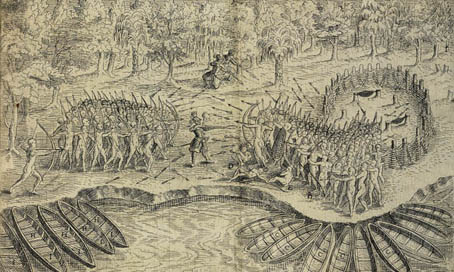
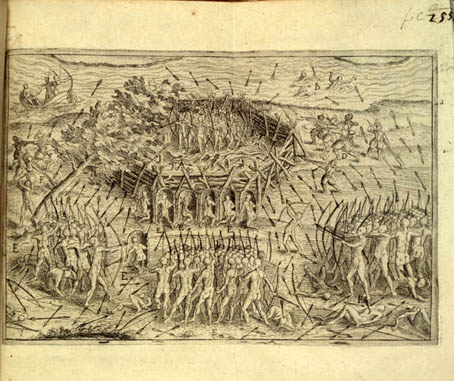
Champlain and Huronia, 1615
“We advanced to attack this village, having our cavalier carried by 200 of the strongest men, who planted it about a pike’s length in front of the village, and I ordered three arquebusiers to mount upon it, where they were well protected from the arrows and stones which might be shot or thrown at them. Meanwhile, the enemy did not on that account cease to shoot a great many arrows which did not miss their mark, and they threw a quantity of stones over their palisades.” (Volume III, p. 71)
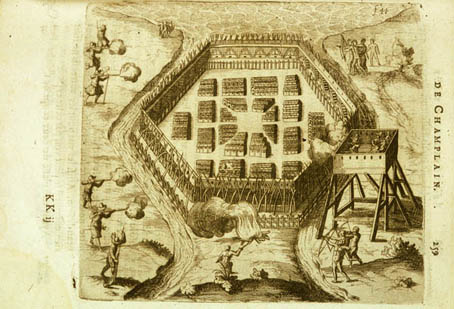
“I assure you one takes a peculiar pleasure in this mode of hunting, which took place every second day, and they did so well that in the thirty-eight days that we were there, they captured one hundred and twenty deer, with which they made good cheer … ” (Volume III, p. 85)
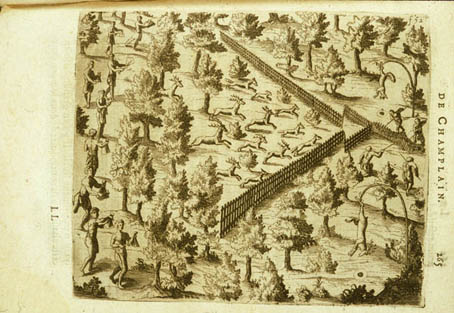
“In this manner, gaily dressed and adorned, they like to show themselves at dances, where their fathers and mothers send them, forgetting no device that they can apply to bedeck and bedizen their daughters; and I can assure you that at dances I have attended, I have seen girls that had more than twelve pounds of wampum on them, without counting the other trifles with which they are loaded and decked out.” (Volume III, p. 135)
“Among these tribes are found powerful women of extraordinary stature; for it is they who have almost the whole care of the house and the work; for they till the soil, sow the Indian corn, fetch wood for the winter, strip the hemp and spin it, and with the thread make fishing-nets for catching fish, and other necessary things they have to do …” (Volume III, p. 136)
“They have only two kinds of dances with some sort of measure, one off our steps and the other of twelve, like the trioly of Brittany. They dance very gracefully, the young men often joining in.” (Volume III, p. 150)
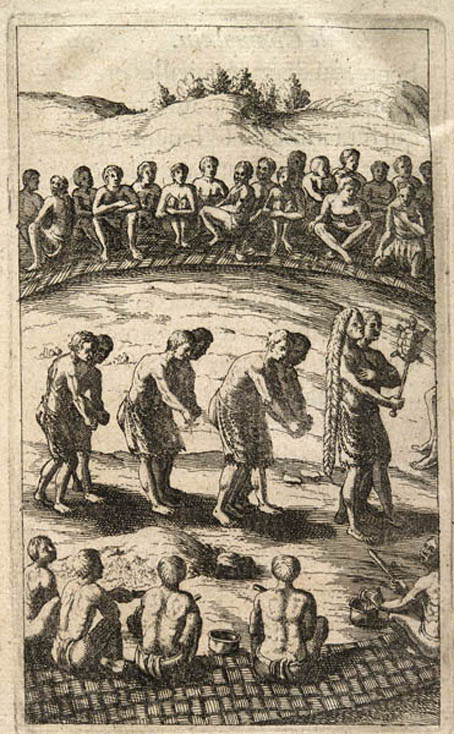
“As regards the burial of the dead, they take the body of the deceased, wrap it in firs, cover it neatly with tree bark, then lift it up on four posts on which they build a cabin covered with tree bark, as long as the body.” (Volume III, p. 160)

